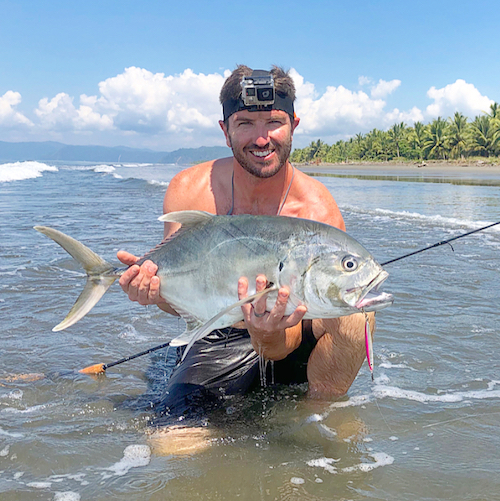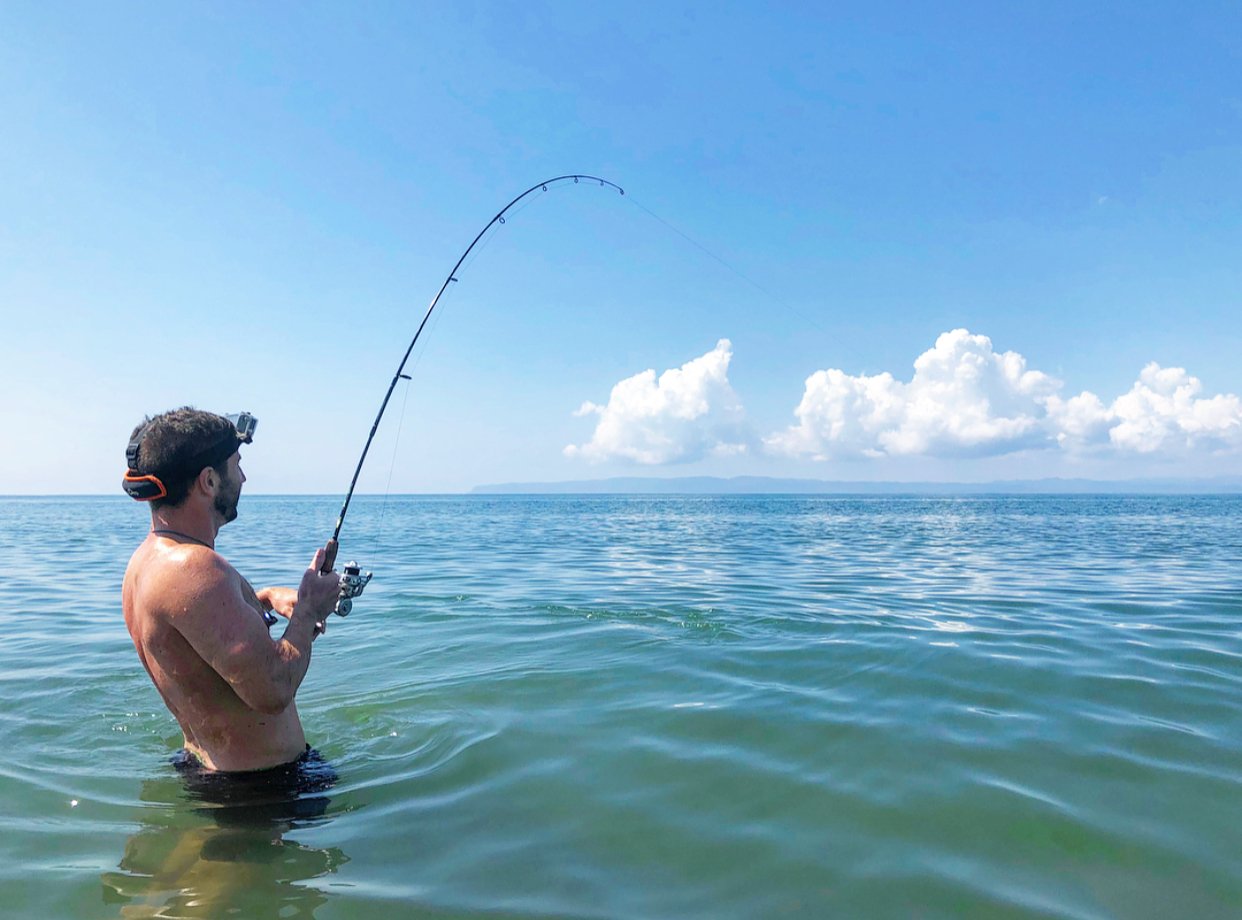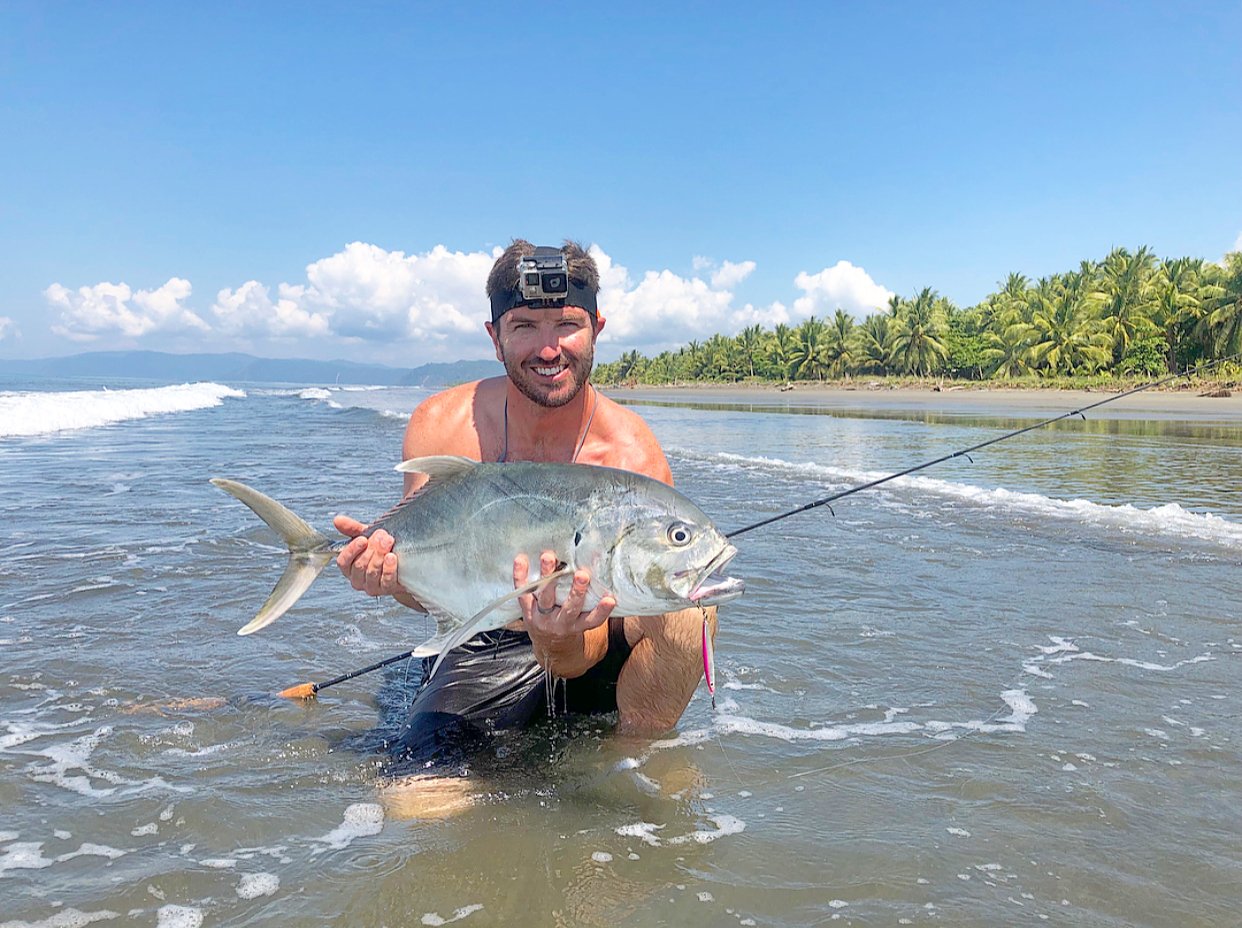
Ryan Collins
The morning of January 27th began like any other morning in Costa Rica. Lauren cooked the crew an amazing breakfast, while we kept a lookout for monkeys in the trees.
Over breakfast I chatted with MFCC members John Silva and Mike Hollander about the action along the beach. A couple days earlier Mike had lost a good fish on the beach, and John had received a few hits.
The surf casting had not been "lights out" by any means. We had been working very hard for not so many bites. Yet the action in Costa Rica can change abruptly. Along this beach, the fish seem to always be on the move.
We finished our breakfast by 9AM and were eager to start making some casts. Lauren, John's wife Michelle, and Mike's wife Lisa grabbed their beach towels and books and headed down to the shore. Mike and I grabbed our fishing poles.
More...
Playa Zancudo
It was a gorgeous morning with bright clear skies and temperatures in the 80's. The Golfo Dulce was glass calm and seemed to stretch into eternity. I scanned the horizon, and nearshore water up and down the coastline looking for birds, bait or crashes from predatory fish.
Spanish mackerel had been the primary catch of late, so I opted to use my lightest travel rod setup-20lb test braid on a Van Staal VR50, paired with a 6'6" Tsunami travel rod (model #TSCS703M).
Mike and I waded into the 86 degree water and began casting. There were no birds or any signs of fish in the area. However, the place began to come to life about 20 minutes after we arrived.
Mike was the first to see a swirl. Moments later a small flock of terns appeared, hovering and diving, and snatching small bait fish with their beaks. Then I saw a flash, and thought I may of had a follow.
It was obvious that life had moved in.
Big Jack Crevalles
I fired my lucky 3/8oz pink Mighty Fish epoxy towards the diving birds and began a moderate retrieve. I would reel quickly for about 5 seconds, then pause, before reeling quickly again, and repeating the process.
Suddenly a monstrous swirl appeared directly behind my epoxy. A split second later the water erupted and I felt a heavy strike on the line. 20 pound braid began pouring from the spool, before I even got a chance to contemplate what was happening!
I turned to Mike in disbelief. Within a minute I was getting low on line. The fish had taken hundreds of yards within the first few minutes!

Fortunately there are no sharp rocks along this beach. For miles around the beach is all sand. On this beach I fish a medium drag. My drag is tight enough to get a good hook set and maintain steady pressure, but loose enough to let the fish run.
My main concern was the treble hook on the epoxy jig. The jig I was using was designed with smaller fish in mind. The lure was not intended to catch big jack crevalles-one of the hardest fighting fish in the entire Pacific. If I applied too much pressure, the hooks on the epoxy jig would bend or break, and I would lose the fish.
Finally, about 23 minutes after hooking up, we caught glimpse of the fish in a wave. It was a big jack crevalle and he was finally getting tired. Moments later I had the jack in just a foot of water. Mike moved in and calmly got a hold on the jack's tail.
We had him!

Jack crevalle taste delicious when prepared right, however we prefer the smaller jacks for table far. I knew I was going to release the big jack, so I tried to keep him wet and in the water.
The jack was tired but not completely spent. I held him by the tail and walked him through the water face first. As I wave crashed in the jack gave a kick and slipped out of my grip, out into the warm water of the Golfo Dulce.
You can watch the entire ordeal by clicking play below.
Tackle and equipment:
In Conclusion
Light tackle can be a joy to fish with. However it can also be a lot of work. After fighting that jack for 20 minutes, my biceps were surprisingly sore! I was satisfied with catching one fish, and decided to call it quits for the day.
Coming up next Sunday at 6:00PM, I'll share with you another post from our 2019 trip to Costa Rica. In the next post I'll share with you a catch and cook video for "grande" Spanish mackerel.
Tight lines





